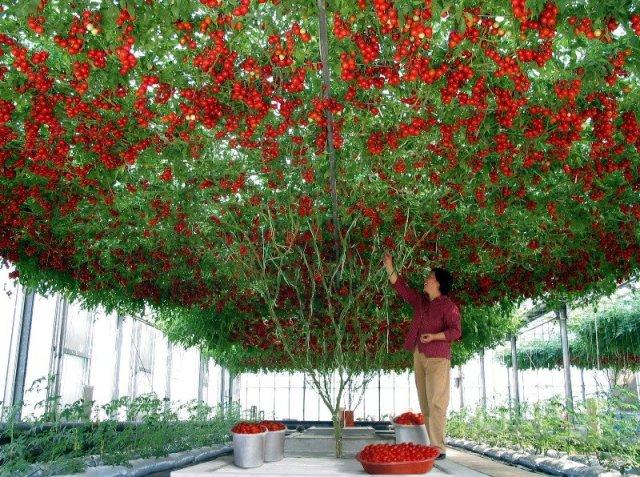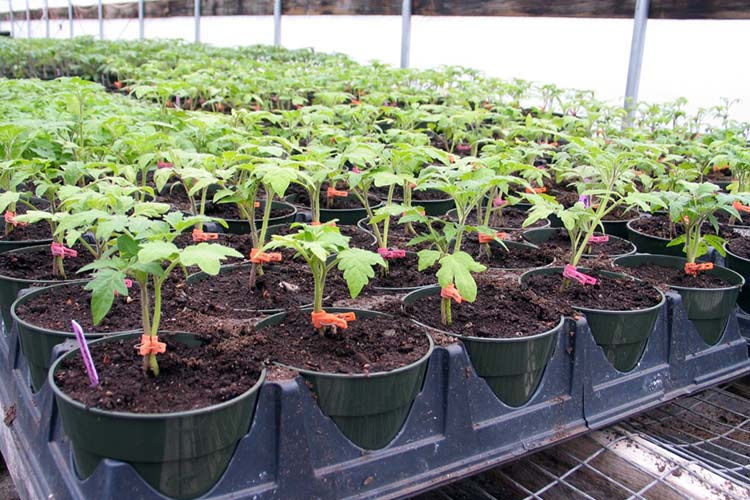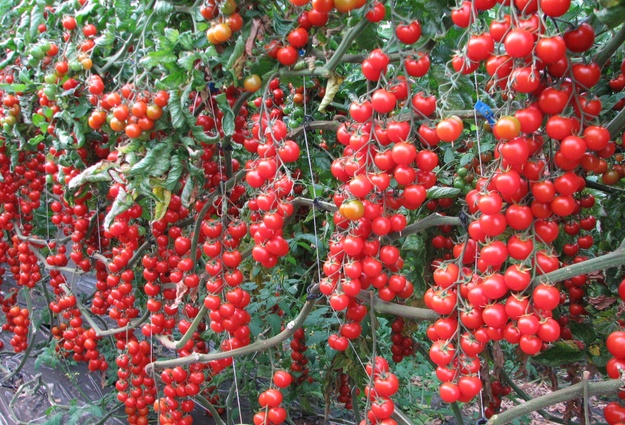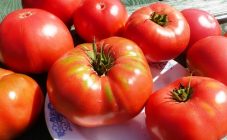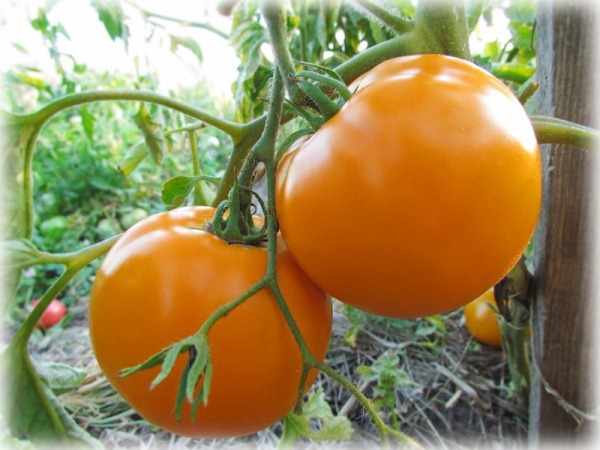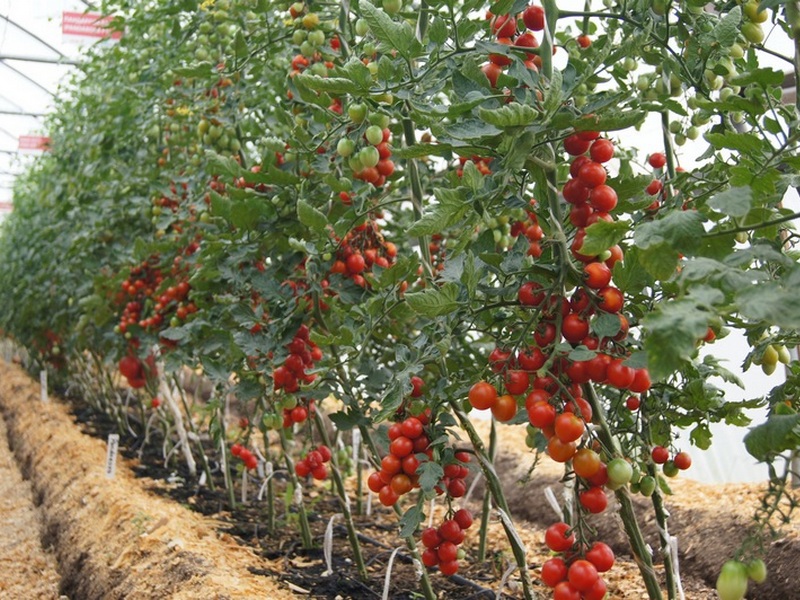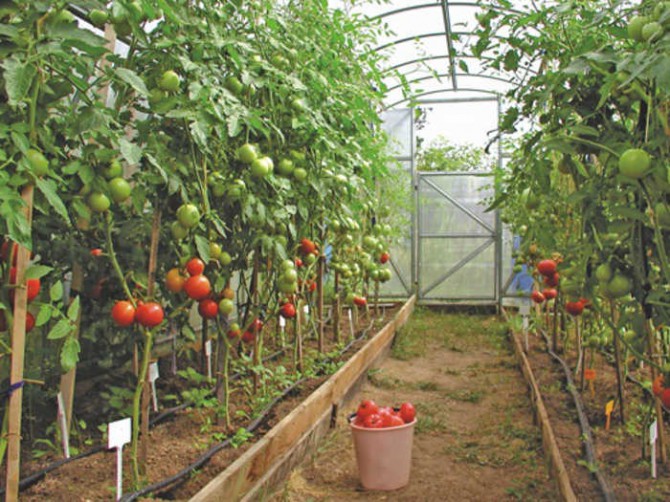Content:
The Banzai tomatoes, well-known to all lovers (they are also called "Bonsai" or "Cherry"), appeared on Russian markets in the late 90s, immediately after they were bred by breeders of the Gavrish company (Moscow). This association, specializing in the cultivation of seeds, is well known to many gardeners for a number of successful new products that can be grown in an apartment on a windowsill (that is, in a purely residential setting).
So no one was surprised by the appearance of another new tomato variety, bred exclusively for cultivation at home. At the beginning of this century (in 2001) it was officially registered in the State Register and is still very popular with most lovers of miniature fruits.
Like any plant that can be grown to fruiting in a domestic environment, the Bonsai tomato is very early maturing. This is manifested in the ripening of its fruits already somewhere 85-90 days after the appearance of the first shoots. This feature is very important for those who would like to organize the mass production of tomatoes for sale, sowing seedlings at intervals of about once a month.
The basis of this experience is the knowledge of how the cultivation of various varieties of tomatoes is carried out, which consists in choosing the best seeds with your own hand (without wasting time on re-grading).
With the regular cultivation of this crop, it is also important to take into account that the ripening period of the fruits of the tomato Gavrish Bonsai is quite extended, and that they can ripen on the bushes for several more months in a row. Despite the fact that this type of tomato was bred for home breeding, no one is forbidden to grow Banzai tomato directly in the beds (outdoors).
In this case, some gardeners use tomato bushes as a curb, placing them along pedestrian paths, and often decorating flower beds with them. It should be remembered that Bonsai tomatoes are more intended for the home and cannot always withstand the vagaries of nature and the threat of disease.
Description and characteristics
This tomato variety belongs to determinant, standard crops, so the height of its bushes rarely exceeds 30 centimeters. At the same time, they have a slightly thickened and strong trunk and do not need a garter at all. But molding for this variety is considered a mandatory procedure, during which the top of the bush is pinched in such a way that it, due to the stepsons, can grow not in height, but in width.
It is believed that the ideal shape and good yield of Cherry Bonsai tomatoes are possible only if three or four separate branches are formed on its bush at the stage of development.
As for the yield index, Bonsai tomatoes are not very fertile crops, since their purpose is completely different. However, if you provide this plant with proper care, then if you follow all the recommendations from the bush, you can get from 0.5 to 1 kilogram of miniature fruits.
The peculiarities of this culture include the ability to tolerate a lack of lighting, which is very important when growing tomatoes at home in conditions of constant lack of sunlight. However, this property distinguishes Bonsai tomatoes only in their comparison with other varieties and is not a guide to action. That is, without good window lighting, apart from the southern side of the apartment, you will not be able to get a good harvest at home.
In appearance, the fruits of this variety meet the following standards:
- The Banzai tomato grown in the house, the characteristics and description of the variety of which are discussed in this section, is a small bush on which not very large and attractive-looking fruits ripen in abundance;
- His pomidorina has a regular oval shape, while having a beautiful appearance;
- Tomatoes, not yet quite ripe, are light green, but as they ripen, they first acquire pink and then a bright (red) color;
- The flesh of Bonsai tomatoes is quite dense, so that sometimes it even seems crispy and juicy, and their skin is thin;
- No more than 2 seed nests can develop inside a mature tomato;
- The fruits of this variety are distinguished by their miniature size; they rarely exceed the size of a grape berry, and their weight is no more than 25-28 grams;
- The taste of tomatoes is strongly influenced by the conditions in the place of cultivation, as well as the degree of care of the plant (but most often they are assessed as satisfactory);
- The fruit contains a normal amount of dry matter and saccharin.
Let's add to the list that this variety of tomatoes is recommended for fresh consumption, that is, you can feast on them directly from the bush. This variety is also good when used in salads and marinades. Even if the rather thin skin of tomatoes bursts when stored in jars, their main pulp, dense in structure, is well preserved.
Agrotechnics
Bonsai tomatoes cultivated in the heat, the characteristics and description of the variety, which are discussed in detail above, have seed material that does not differ in any way from other tomatoes. They can stand out a little for their size and are sometimes treated with special means before being sold to ensure their reliable germination.
The processed seeds have a difference in color that immediately catches the eye. As a rule, such seed material does not need additional preparation and soaking. A typical example in this sense are the seeds of the Bonsai-micro-f1 variety.
Breeding seedlings and replanting them
It is necessary to sow seedlings in compliance with the following rules:
... Seeds ready for dispersion are placed in holes, which are pre-drilled in well-moistened soil (their depth should not exceed one centimeter);
- After that, they should be intensively shed from a watering can with a fine-mesh mesh, after which the container with seedlings is transferred to a well-lit and not very warm place;
- Regardless of the season in which the seedlings are formed, in cloudy weather, it is recommended to use artificial lighting immediately after pecking the seeds.
After a real tomato leaf appears on the miniature sprouts, it will be possible to start planting them in separate containers of 0.2-0.3 liters. For this, it is allowed to use any plastic jars with specially made drainage holes in the bottom.
Seedling vegetation
By the time several pairs of miniature leaves appear, the grown bushes should be carefully transplanted into a large container (about one liter). In addition, at this stage of growth, you can start feeding them with any kind of fertilizer suitable for indoor flowers.And already a day after transplanting, the stem of the tomato bushes should be pinched in order to pinch it (the formation of lateral shoots).
Tomatoes of this variety do not require too large containers; to continue their normal growth, volumes of the order of 2-3 liters are quite enough. In them, the final planting of bushes is carried out, which have reached an age of about 1.5-2 months. At about two months of age, they begin to bloom actively (and sometimes they can tie fruits noticeable to the eye).
Their first inflorescence usually appears after the third pair of leaves has formed, but all subsequent ones occur in random order. According to experienced gardeners, during the flowering process, it will be necessary to organize the feeding of the tomatoes one more time, as well as additionally pinch the lateral points of the sprouts (in case of their strong growth upward).
For systematic watering of tomato bushes grown in apartment conditions, it is recommended to use only warm and well-settled water. The frequency of this procedure depends on the ambient temperature and air humidity (with an increase in the first indicator and a decrease in the second, it increases). Overflow in this case is extremely undesirable (this applies not only to seedlings, but also to already quite mature bushes). Before carrying out the next watering procedure, it is best to wait until the topsoil has completely dried out.
Advantages and disadvantages
This type of tomato has the following advantages:
- High yield (from a small bush it is sometimes possible to collect more than 1 kg of fruits);
- Ease of breeding varieties, consisting in the fact that it is not at all necessary to tie up the bushes;
- Short ripening period for ripe and juicy fruits;
- The ability to pick up ripe tomatoes long after the other varieties have ceased to bear fruit.
The fruits of tomatoes of the considered species do not ripen so quickly, but with a systematic frequency. So it is possible to collect them within a number of months that have elapsed since the very first tomatoes reddened. This feature of Banzai tomatoes should also be attributed to the advantages of indoor hybrid crops.
Still, its main advantage is in the possibility of breeding not only at home on the windowsill, but also in an open garden bed. As for the disadvantages of this variety, except for the fact that it requires high-quality sunlight, there are no other restrictions on the growing season.
In the final part of the review, we note once again that Bonsai tomatoes, cultivation in the house of which is the basis of their cultivation, are decorative fruits, at the same time distinguished by high taste. They are mainly intended for cultivation in a greenhouse, home environment and, despite their not very impressive appearance, require constant care and special attention.
